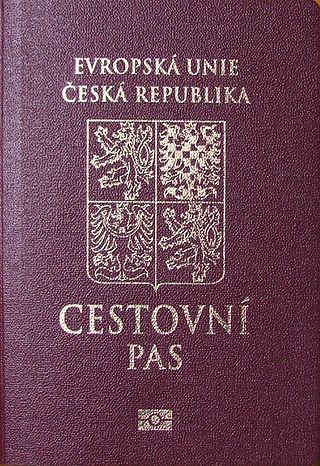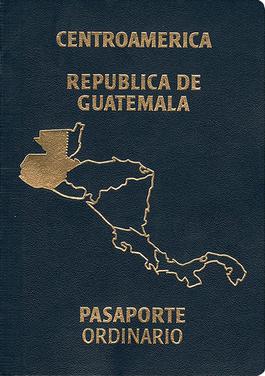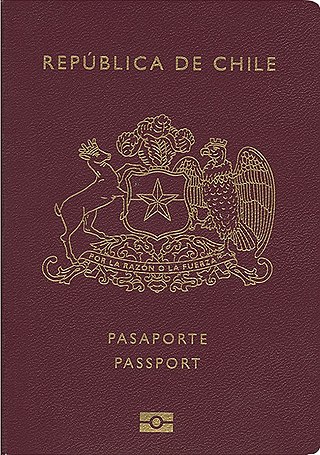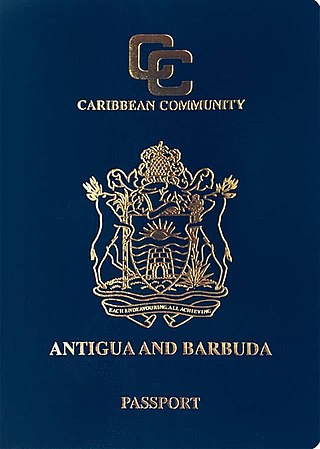
The Czech passport is an international travel document issued to nationals of the Czech Republic, and may also serve as proof of Czech citizenship. Besides enabling the bearer to travel internationally and serving as indication of Czech citizenship, the passport facilitates the process of securing assistance from Czech consular officials abroad or other European Union member states in case a Czech consular is absent, if needed.

A Portuguese passport is an identity document issued to citizens of Portugal for the purpose of international travel. The passport, along with the Citizen Card allows for free rights of movement and residence in any of the states of the European Union, European Economic Area and Switzerland. Every Portuguese citizen is also a citizen of the European Union.

Serbian passport is the primary document of international travel issued to nationals of Serbia. Passports are issued and renewed by the Serbian Police on behalf of the Ministry of Internal Affairs or, if the citizen resides abroad, by the Serbian diplomatic missions. Besides serving as proof of identity and of citizenship, it facilitates the process of securing assistance from Serbian consular officials abroad, if needed.

The Montenegrin passport is the primary document for international travel issued by Montenegro.

Lithuanian passport is an official document, issued to Lithuanian citizens to identify themselves as such and/or to facilitate travel outside Lithuania. Every Lithuanian citizen is also a citizen of the European Union. The Lithuanian passport, along with the national identity card allows for free rights of movement and residence in any of the states of the European Union, European Economic Area and Switzerland.

A Costa Rican passport is an identity document issued to Costa Rican citizens to travel outside Costa Rica. Currently, it is valid for 6 years. It is issued to people born on Costa Rican soil, and to children of Costa Rican citizens born abroad, who are reported to the nearest Costa Rican consulate. Children born overseas to a Costa Rican citizen are Costa Rican by birth, not by naturalisation, as stated in the Constitution of Costa Rica.

Guatemalan passports are issued to Guatemalan citizens to travel outside Guatemala. As of 1 February 2024, Guatemalan citizens had visa-free or visa on arrival access to 137 countries and territories, ranking the Guatemalan passport 38th in terms of travel freedom according to the Henley visa restrictions index.

A Chilean passport is an identity document issued to citizens of Chile to facilitate international travel. Chilean passports are valid for worldwide travel and facilitate the access to consular services whilst abroad. They are issued by the Registro Civil e Identificación.

Latvian passports are issued to citizens of Latvia for identity and international travel purposes. Receiving a valid passport is mandatory from the age of 15, but passports can be requested for younger children if needed for travel and other purposes. A passport is valid for 10 years if the citizen is 20 or older, for 5 years if 5–20 and for 2 years if 0–5 years old. Non-citizen passports, and refugee travel documents, have been issued until 2020. Every Latvian citizen is also a citizen of the European Union. The passport, along with the national identity card, allows Latvian citizens to travel and to have rights of free movement and rights to reside in any states of the European Union, European Economic Area and Switzerland.

A Moldovan passport is an international document issued to citizens of the Republic of Moldova for the purpose of international travel. The passport is issued by the Public Services Agency and by Moldovan foreign representations abroad. The passport is valid for ten years. For children under the age of seven years it is valid for four years. Since 1 January 2006, Moldovan citizens can hold two passports simultaneously, providing a written request has been submitted to local passport office.

The Azerbaijani passport is issued by the Ministry of Internal Affairs of Azerbaijan to the citizens of Azerbaijan for international travel. Ordinary passports are valid for 10 years from the date of issue and contain 34 visa pages. Passport content is printed both in Azerbaijani and in English.

The Jordanian passport is issued by the Civil Status and Passport Department (CSPD) for international travel.

The Monégasque passport is issued to citizens of Monaco for international travel. In 2009 there were an estimated 6,000 in circulation. The passport is burgundy in colour and has the national coat of arms and the words "Principauté de Monaco" on it.

The Guyanese passport is issued to citizens of Guyana for international travel. As of July 2007, Guyana has issued the common Caribbean passport, featuring the logo of the Caribbean Community on the cover.

The Papua New Guinean passport is issued to citizens of Papua New Guinea for international travel.

A Barbados passport is a travel document issued to citizens of Barbados, in accordance with Citizenship Act from 1978, the Immigration Act from 1997, and the Barbados Constitution, for the purpose of facilitating international travel. It allows the bearer to travel to foreign countries in accordance with visa requirements, and facilitates the process of securing assistance from Barbados consular officials abroad, if necessary.

Antiguan and Barbudan passports are issued to nationals of Antigua and Barbuda for international travel. The passport is a CARICOM passport as Antigua and Barbuda is a member of the Caribbean Community.

The Burundian passport is issued to citizens of Burundi for international travel.

The Djiboutian passport is issued to citizens of Djibouti for international travel. The document is a biometric machine-readable passport with a blue cover with the text "République de Djibouti" above the coat of arms, and the text "passport" below it in Arabic and French. The passport is valid for 5 years and contains 31 pages. The passport includes the full name, photograph, signature and date of birth of the holder. The newer passports offer better security and state-of-the-art anti forging parameters and have a soft cover.

The Tanzanian passport is issued to citizens of the United Republic of Tanzania for international travel. The Immigration Department is responsible for the issuance of Passports for the purpose of international travel.





















